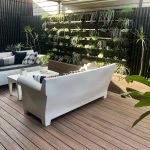A period-style pergola is a distinctive outdoor structure for specific historical architectural periods. These outdoor living spaces are celebrated for their intricate designs and cultural significance, often reflecting the grandeur of Victorian or Edwardian landscapes. Originating from the Latin word ‘pergula’, these structures served as a statement of luxury and leisure in ancient times and have evolved into versatile features in modern garden design.
Pergolas have long been pivotal to garden design, acting as a centrepiece that enriches the aesthetics and functionality of separate outdoor spaces. Their role in providing shade, support for climbing plants, and a transitional area from indoors to outdoors has cemented their importance in landscapes.
Homeowners opt for period-style pergolas to inject a sense of timelessness and elegance into their gardens. These structures enhance the visual appeal of outdoor space and serve as a nod to the craftsmanship and stylistic values of bygone eras, offering a unique blend of history and comfort in today’s outdoor living.
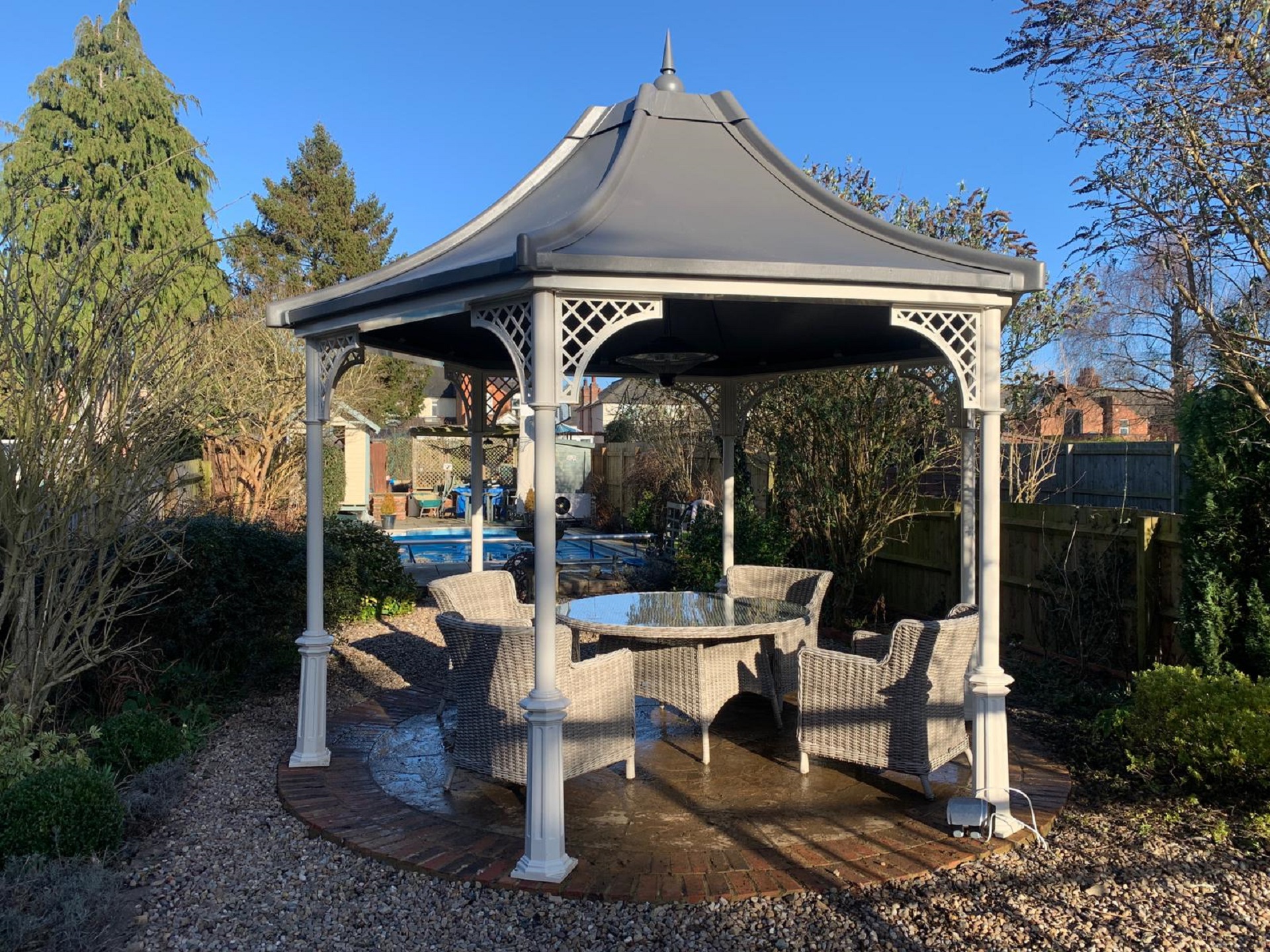 The Essence of Period Style Pergolas
The Essence of Period Style Pergolas
Period-style pergolas are defined by their distinctive architectural features that draw from historical influences, with each pergola structure reflecting the design principles and decorative motifs of its era. These fundamental elements include ornate latticework, classic columns, and intricate joinery integral to the period’s character.
A period-style pergola in an outdoor living space significantly enhances its visual charm. The structure’s historical design elements serve as an artistic focal point, enriching the garden’s aesthetics while providing a functional area for outdoor living, blending the allure of the past with the practicalities of modern enjoyment.
Element 1: Architectural Design
Historical Accuracy in Structure
A pergola’s architectural details are paramount in achieving historical accuracy, the cornerstone of a period-style structure. From the curve of a truss to the lattice pattern, these nuances make a period pergola authentic. Ensuring these elements are correct can distinguish between a mere nod to a style and a faithful reproduction. This is especially important for enthusiasts seeking to create a place to relax that feels genuinely rooted in history.
Examples of period-specific structural designs vary widely. Victorian pergolas often feature ornate detailing and curved lines, whereas Edwardian ones might exhibit more structured, geometric patterns. A Renaissance-inspired pergola might boast substantial stone columns and heavy beams, reflecting the grandeur of the era. These designs, meticulously crafted, not only provide a perfect spot to unwind but are also long-lasting tributes to architectural artistry. With open sides typical in many designs, period pergolas serve as year-round, low-maintenance outdoor retreats, creating an excellent choice for those who value aesthetics and durability.
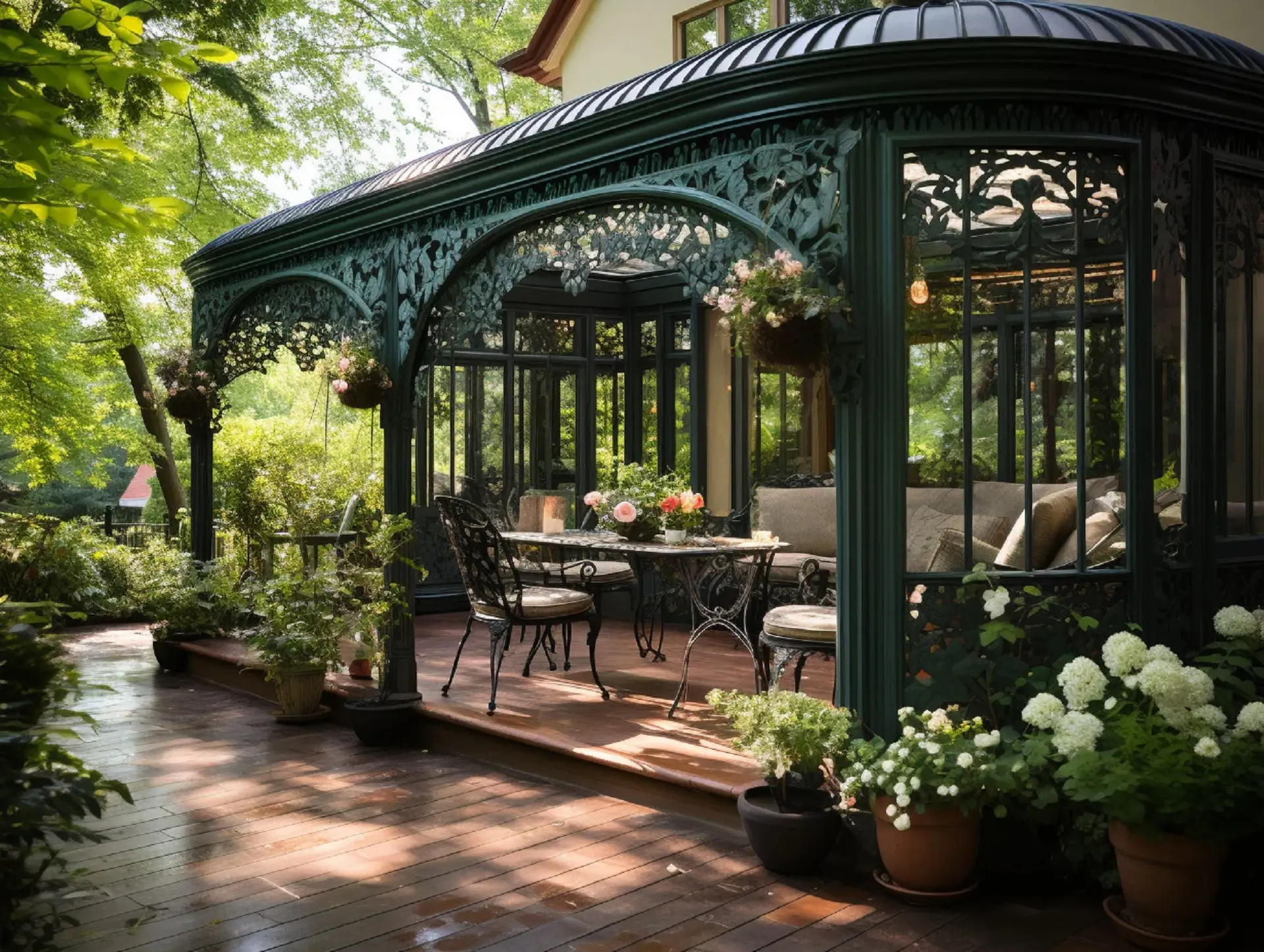 Modern Adaptations
Modern Adaptations
In modern adaptations of period-style pergolas, contemporary materials and construction techniques ensure longevity and low maintenance without sacrificing the design’s historical integrity. Aluminium and PVC, treated to mimic traditional wood, resist weathering and pests, providing a long-lasting outdoor living space. These advancements allow for the creation of pergolas that stand the test of time, requiring minimal upkeep while retaining their classic beauty.
While utilising modern conveniences, it is crucial to maintain the historical charm that defines a period-style pergola. This is achieved by carefully selecting materials and adapting construction methods that mirror the visual qualities of the originals. Textures and finishes are chosen to reflect the patina of age, and design blueprints are followed to replicate historical dimensions and patterns. This careful balance ensures that the pergola remains a perfect spot for relaxation, exuding timeless appeal and fitting year-round into its historical context.
Element 2: Material Selection
Authentic Materials
Traditional materials such as wood, wrought iron, and stone often capture the era’s essence in constructing period-style pergolas. These materials are selected for their historical authenticity and ability to form simple shapes and structures that are true to the period. While wood offers warm tones and a natural feel, wrought iron provides intricate designs and stone anchors the structure with its sturdiness and classical aesthetic.
The durability and maintenance of these materials, however, can vary. Wood may require regular staining or sealing to remain weather-resistant, while wrought iron might need treatment to prevent rust. Stone is inherently long-lasting but may need cleaning to preserve its appearance. The longevity of these materials ensures that other garden design features are complemented for many years, providing a perfect balance between authenticity and endurance.
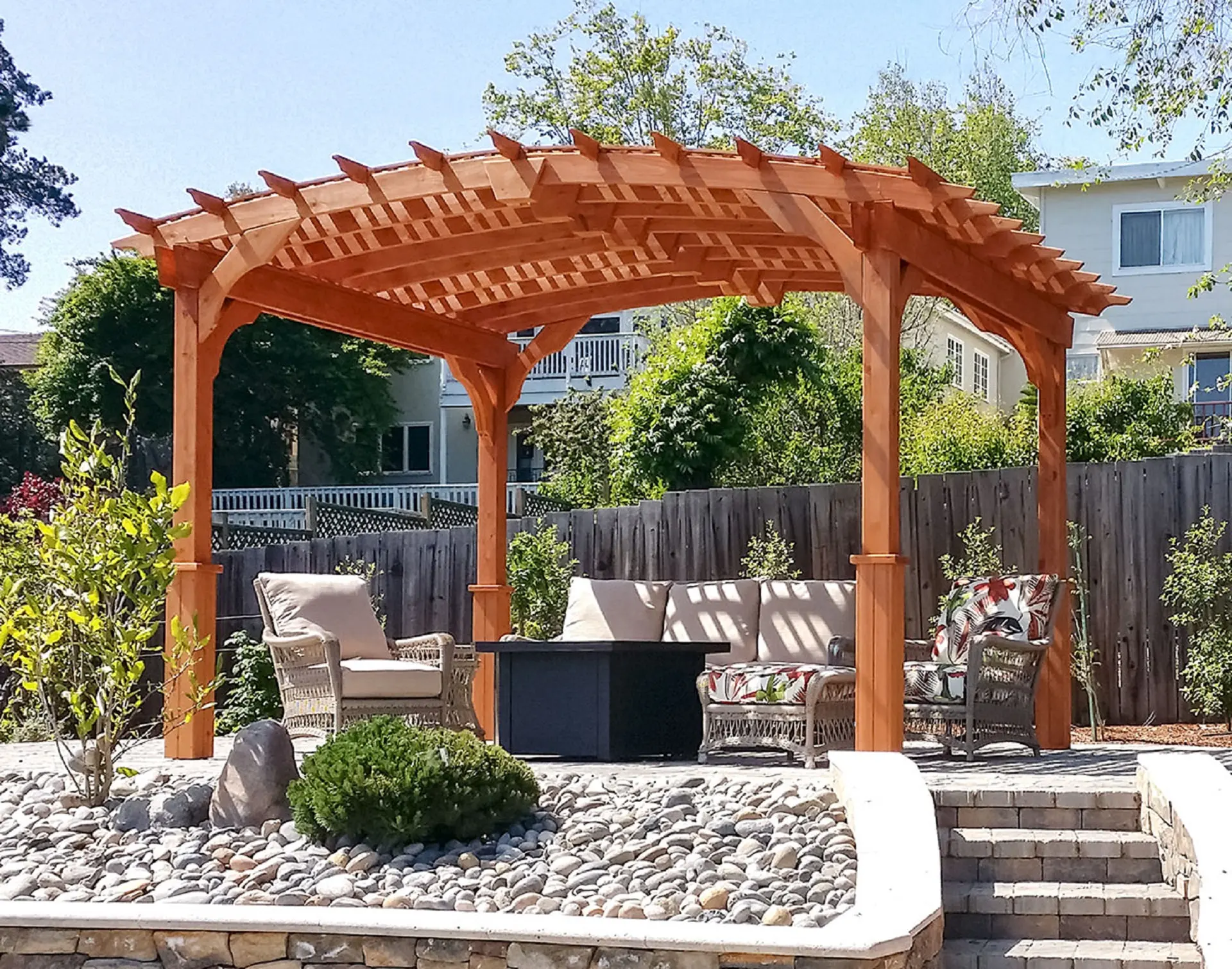 Contemporary Alternatives
Contemporary Alternatives
Contemporary alternatives for period pergolas include materials like aluminium, vinyl, and fibreglass designed to mimic the look of traditional options. These modern materials often come with finishes that closely resemble wood grain or stone textures, making them nearly indistinguishable from authentic materials.
The benefits of updated materials are manifold. They are typically more weather-resistant, requiring less maintenance over time, which can be a significant advantage for homeowners looking for low-maintenance outdoor features. Furthermore, they often offer greater flexibility in design, allowing for quickly incorporating simple shapes and other materials. These modern adaptations balance maintaining the pergola’s period style while ensuring it remains durable and functional in contemporary outdoor living spaces.
Element 3: Roofing and Coverings
Period-Appropriate Roofing
The roofing materials traditionally ranged from thatch to terracotta tiles for period-style pergolas, matching the era’s architectural norms. Modern equivalents include polymer composites replicating terracotta’s texture and colour and synthetic thatch that withstands the elements while preserving the historical aesthetic. These materials are crucial in achieving the period look, ensuring the pergola’s roof is functional and historically resonant.
The roof of a pergola often dictates its overall style, and for a period-appropriate design, the roofing must align with the architectural nuances of the era it represents. Whether it’s the rustic appearance of a thatched roof or the Mediterranean charm of terracotta tiles, the roofing is a defining element that contributes significantly to the authenticity and visual appeal of the ideal pergola, allowing it to stand alongside other outdoor structures with coherence and historical accuracy. Not all pergolas are roofed structures, but when they are, the choice of covering is instrumental in transporting one back in time while also providing shelter from the outdoor elements.
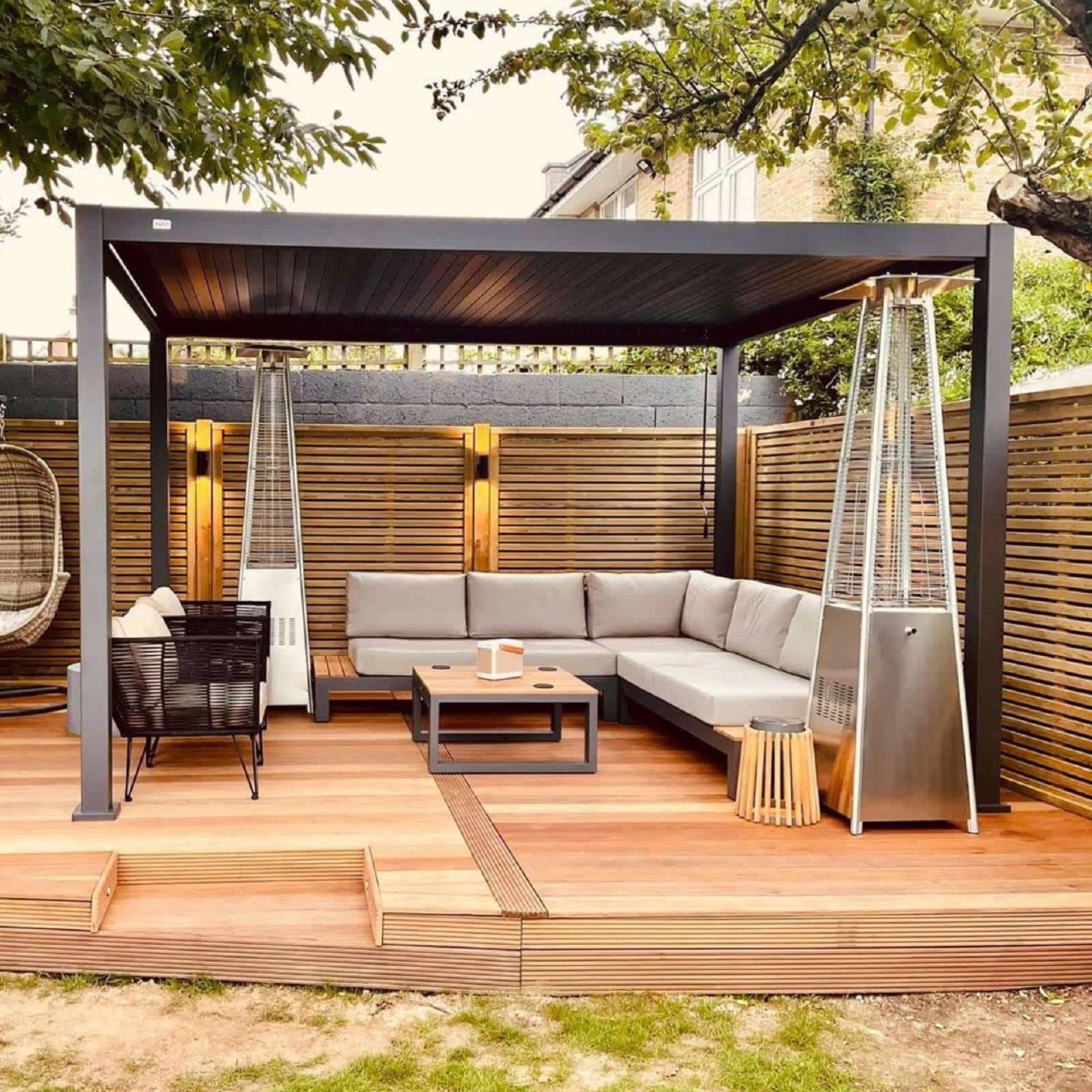 Balancing Exposure and Protection
Balancing Exposure and Protection
Designing the pergola’s roof requires careful consideration to balance aesthetic appeal with practicality. Louvered pergolas are an excellent solution, as they offer adjustable slats for varying degrees of sunlight and shade. This design enables homeowners to enjoy the warmth of the sun or the coolness of the shade with a simple adjustment—a modern twist on traditional pergola designs.
Balancing sunlight exposure with protection is critical to creating an inviting outdoor space. A louvred roof can tilt to safeguard against harsh outdoor elements while allowing for light and air when desired. This dynamic system ensures that the pergola remains an ideal retreat, come rain or shine, providing the perfect blend of exposure and shelter throughout the seasons.
Element 4: Decorative Details
Ornamentation
The significance of decorative elements within a pergola structure cannot be overstated. These accents, such as finials, friezes, and carved beams, serve as the jewellery of the outdoor living space, adding personality and reflecting the period’s style. They also help create a cohesive look that complements the pergola and surrounding garden.
When choosing decorations for a pergola, it is essential to consider the architecture of the home and the style of the existing outdoor space. Cohesion is critical, whether one chooses wrought iron detailing for a classic look or intricate wood carvings for a more rustic appeal. Each element should enhance the pergola’s character without overwhelming it.
 Paint and Color Schemes
Paint and Color Schemes
Historical colour palettes play a pivotal role in accentuating the period authenticity of a pergola. These can range from natural wood tones to the whites and greens typical of the Victorian era or even the bold Mediterranean hues in Greek and Roman-inspired designs.
Selecting and applying paint or stains to a pergola requires understanding the period’s colour schemes and the types of finishes used. Choosing weather-resistant options that honour the historical context while protecting the structure is essential. The right colour can transform the pergola, making it a standout feature or a subtle nod to historical elegance within the outdoor living space.
Element 5: Climbing Plants and Foliage
Vine Selection
Throughout history, pergolas have been adorned with various types of climbing plants, each era favouring different species. Victorian gardens often featured ornate climbing roses, while ancient Roman and Greek pergolas were draped with grapevines. In selecting vines for a period pergola, it’s essential to reflect the typical flora of the time.
Choosing the right climbing plants involves considering the climate, the amount of maintenance required, and the growth patterns of the vines. Caring for these plants often involves regular pruning to control growth, ensuring adequate support, and managing their water needs, including directing rainwater efficiently for plants that thrive on natural irrigation.
 Integrating Foliage
Integrating Foliage
Foliage on a pergola adds privacy and visual interest, creating a natural ambience in the outdoor living space. Fast-growing ivy or wisteria can provide a lush, green haven, while fragrant jasmine or honeysuckle adds sensory pleasure to the retreat.
Plant placement and support structures are paramount for climbing vines. Strategic positioning allows for optimal sun exposure and growth patterns, while robust supports ensure that the weight of mature plants doesn’t compromise the pergola structure. Integrating foliage successfully requires a thoughtful approach that considers both the aesthetic impact and the horticultural needs of the climbing plants, creating a harmonious and enchanting outdoor environment.
Element 6: Furniture and Accessories
Complementary Furnishings
Selecting period-appropriate furniture is vital in enhancing the authenticity of an outdoor living space with a pergola. Furniture pieces that resonate with the pergola’s era—such as wrought iron chairs for a Victorian garden or minimalist wooden benches for a modernist space—can add complementary patio furniture that elevates the overall ambience. The chosen furnishings should reflect the period and offer comfort and functionality for contemporary use.
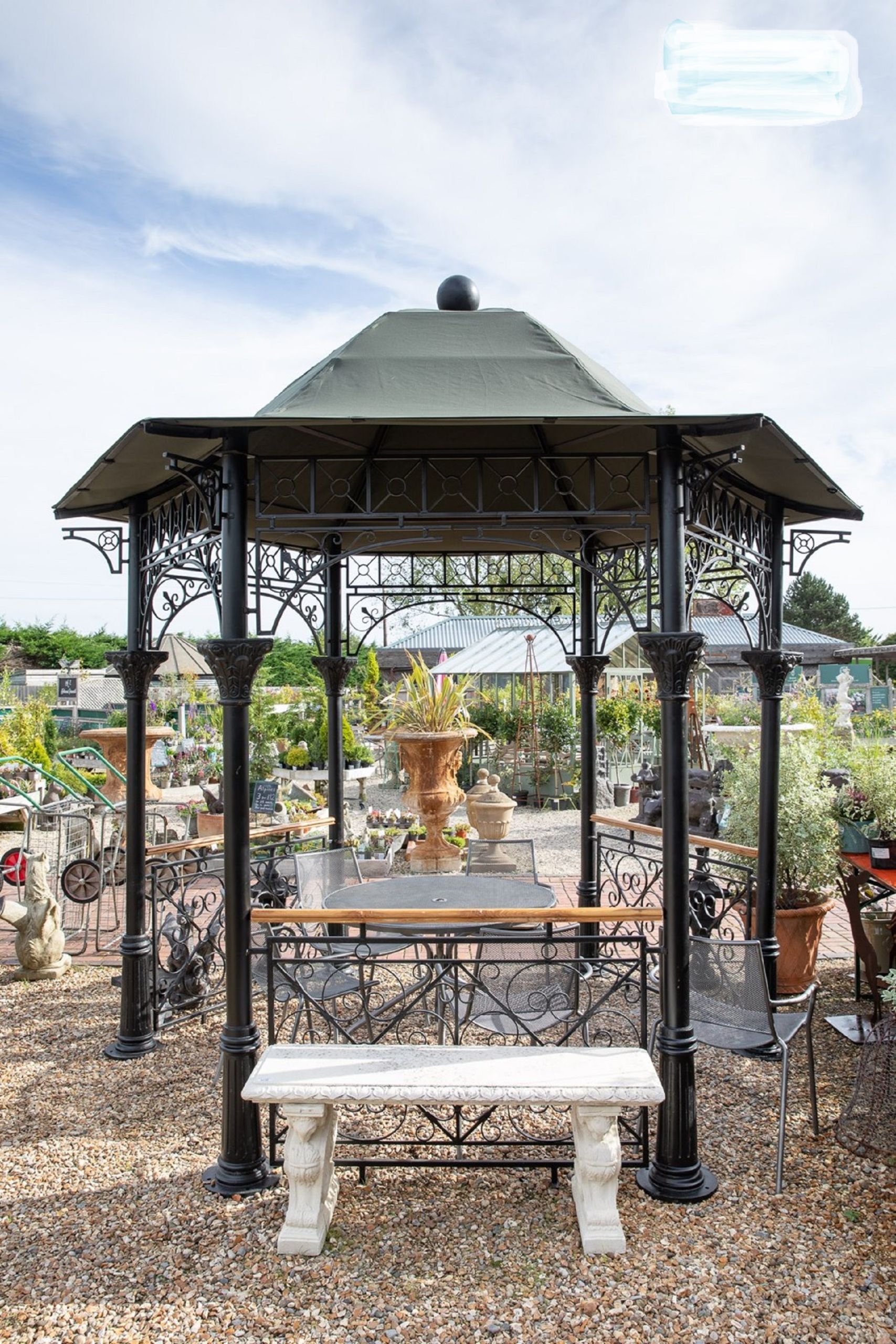 Accessorising Your Pergola
Accessorising Your Pergola
Accessorising a pergola with period-specific accents can complete the historic look while adding personal touches. Consider adding antique lanterns or vintage planters to a traditional pergola to evoke a sense of the past. Statuettes or stone urns could provide an artistic flair for a Renaissance-inspired space. These accessories should harmonise with the theme, subtly enhancing the outdoor living space’s historical narrative without overwhelming the pergola’s structural features.
Element 7: The Groundwork
Flooring Options
Traditional flooring materials for pergola grounds have ranged from simple compacted earth to more elaborate mosaic tiles, flagstone, or brick, depending on the period and style. A Renaissance pergola might feature intricate stonework, while a rustic country-style pergola could be grounded with gravel or brick.
The flooring choice significantly impacts the style and functionality of the outdoor living space. A stone floor can lend a sturdy, timeless feel, suitable for heavy furniture, while brick can offer a warm, inviting atmosphere. The right flooring choice not only complements the pergola’s design but also dictates the comfort and use of the space, influencing how it’s enjoyed through the seasons.
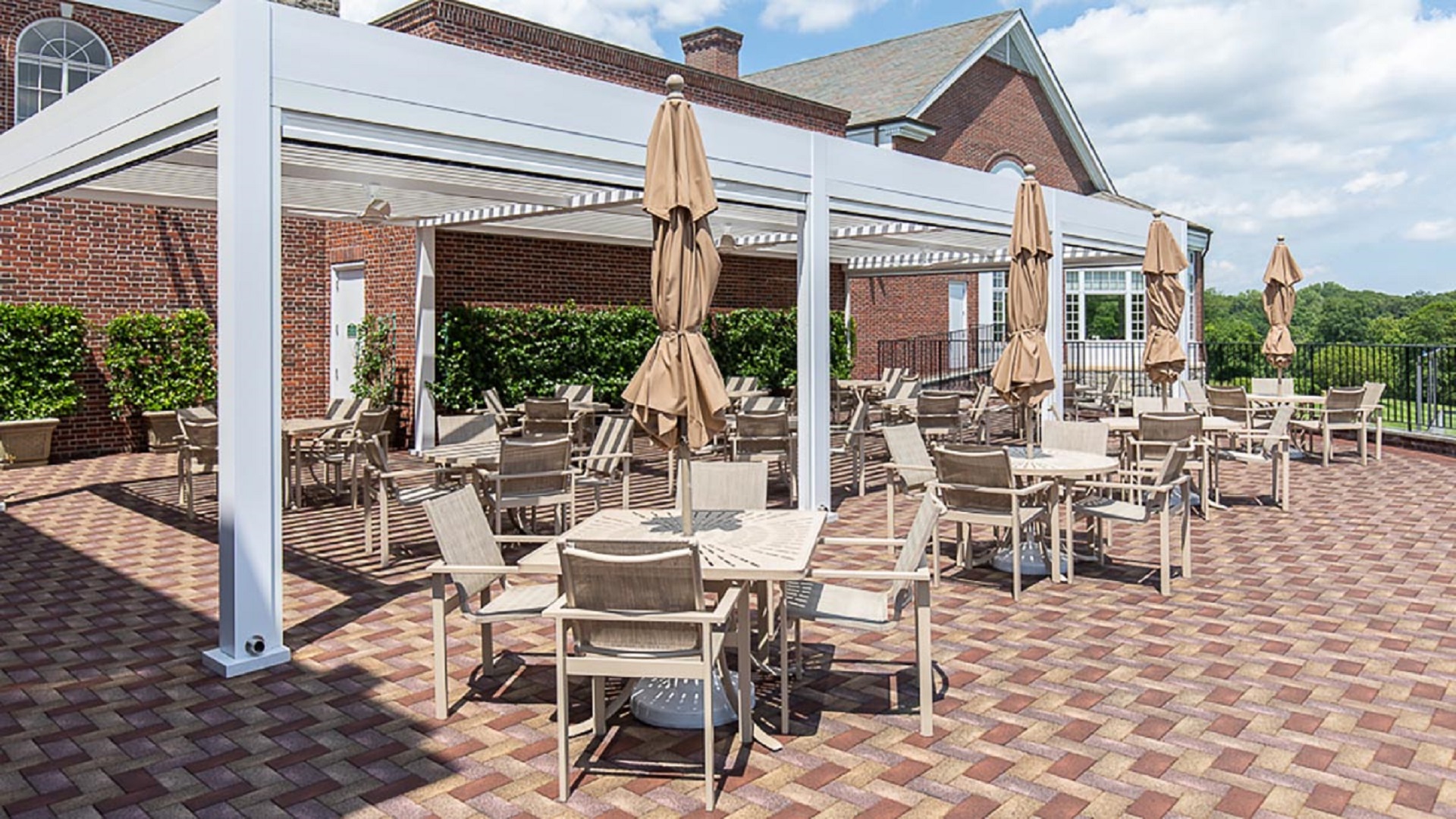 Landscaping Integration
Landscaping Integration
The pergola should not only complement but also integrate with the surrounding landscape. This means considering the existing garden’s style and incorporating similar or accentuating elements around the pergola’s base.
Historical plant choices and design elements are also essential for an authentic look. For example, a Victorian pergola might be surrounded by a formal English garden with box hedges and rose bushes. In contrast, a Mediterranean-inspired pergola could be set amidst olive trees and lavender. Selecting plants common in the pergola’s design period can help bind the structure seamlessly with its environment, creating a coherent and immersive historical outdoor experience.
Implementing Your Period Style Pergola
Planning and executing your period-style pergola project requires a blend of historical research, design precision, and careful selection of materials and plants. Start by defining the architectural era you wish to emulate and study the structural nuances characteristic of that time. Consult a professional to ensure the design meets modern safety standards while preserving historical integrity. Choose authentic materials and period-appropriate plants to enhance the ambience. Manage the project timeline and budget carefully, ensuring that each element, from the louvred roof to the complementary patio furniture, merges into a seamless, functional, and aesthetically faithful outdoor living space.
Crafting Timeless Elegance with Pergolas
The perfect period-style pergola harmonises seven key elements: structural integrity, roofing and coverings, decorative details, climbing plants and foliage, furniture and accessories, and thoughtful groundwork. Each component is pivotal in crafting an authentic and enchanting outdoor retreat. For a custom pergola that captures the essence of history with modern craftsmanship, explore the bespoke options at Aaron’s Outdoors and transform your garden into a timeless sanctuary.




